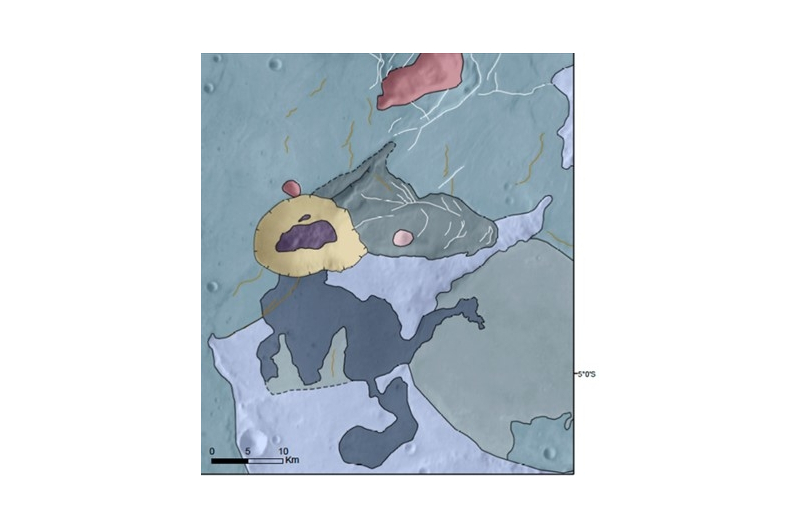MARTIAN ANCIENT CALDERAS – EXPLORATION OF UNDER-RECOGNIZED EARLY MARTIAN VOLCANISM
2023.01.17
Volcanism throughout the Late Noachian to Amazonian shaped the current Martian landscape. Commonly recognised volcanic features on Mars includes large shields, lava flows, cones, and summit craters. From massive ancient calderas resting on topographic rises in the Circum-Hellas Volcanic Province, to large shields of the Tharsis and Elysium regions that marking the youngest volcanic centres; Martian volcanism is generally traditionally characterised by construction of iconic topographic rises and formation of summit calderas. However, several heavily degraded craters within the plains of the Arabia Terra would argue otherwise. These craters of potential volcanic origin, lack distinctive impact features and present evidence of explosive volcanic activity. The proposed late Noachian to early Hesperian ancient explosive volcanic constructs, termed “plain style caldera complexes”, are characterised by low topographic relief, arcuate faulting, steep scarps, floor units composed of friable materials, and flow deposits and fractured crustal blocks. Because it is challenging to map geology and structure of Mars soley through remote sensing, caldera structures are easily mistaken as degraded impact craters. Meanwhile, similar structures have been identified with the Mid-Noachian to Hesperian plains of Xanthe Terra.
Further investigation is needed to validate the hypothesis and establish connections between the proposed caldera constructs candidates. Therefore, a comparison among the candidate calderas with Earth analogues would enable us to reconstruct the nature of Martian palaeo-explosive volcanism in late Noachian to early Hesperian. This work therefore has important implications for past crustal resurfacing, volcanic outgassing and associated climate impacts.
Additional information: Ms. Yin Yau CHU, Yoyo, yycyoyoconnect.hku.hk










